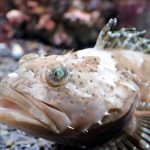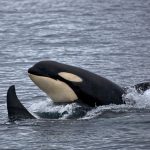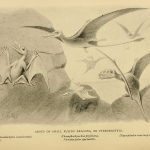
Pterodactyls have quite an iconic reputation among prehistoric animals, thanks to their ability to fly. This made them stand out, when at that time, only insects could fly. Ironically, pterodactyls actually remain one of the more mysterious dinosaurs we know about today. Learn more about these prehistoric animals with these 30 pterodactyl facts.
- 01Scientists have discovered an estimated 30 fossilized pterodactyl specimens so far.
- 02Pterodactyls had an estimate of 90 teeth.
- 03Some pterodactyl species featured bony crests up to 46 mm long on their heads.
- 04However, these crests typically only had a height of around 1 mm.
- 05Pterodactyls measured around 1 meter from the tip of one wing to the tip of their other wing.
Pterodactyls don’t actually count as dinosaurs.
They’re actually reptiles, part of the order of flying reptiles that scientists have named the pterosaurs. This stands in contrast to dinosaurs, which have formed a separate group of their own. Eventually, they evolved into modern birds. Also in contrast to dinosaurs, pterosaurs had cold-blooded metabolisms, while dinosaurs had warm-blooded metabolisms. That said, pterosaurs do have the distinction of evolving as the first flight-capable vertebrates.
Pterodactyls had a curious appearance.
They had long and thin heads, along with small bodies that stood up to just below a man’s knee. The most curious part of their appearance, however, involved their wings, which resembled those of bats rather than those of birds. Specifically, a membrane of skin and muscle stretching from their elongated fourth fingers, down to their hind limbs. This makes it a point of debate whether pterodactyls could actually fly, or if they just glided on the wind similar to bats.
Fossil evidence has allowed scientists to trace a pterodactyl’s early life history.
The youngest pterodactyl fossils discovered so far tended to have very small sizes, with skulls between 15 to 45 mm long. Scientists discovered that these fossils belonged to pterodactyls around a year old. These very young pterodactyls also had very few teeth, only 15 compared to an adult’s 90 teeth.
Other fossils dated to belong to 2-year-old pterodactyls have grown, with skulls up to 95 mm long. Scientists have also dated fossils belonging to 3-year-old pterodactyls, but signs of growth remain on the fossils. This has led scientists to wonder if any adult pterodactyl fossils actually exist, with the search continuing to this day.
They’ve also managed to figure out the pterodactyl’s breeding behavior.
Scientists think pterodactyls reproduced seasonally, with one batch of pterodactyl hatchlings having grown to juveniles by the time the next batch hatches. The scientists also think that pterodactyls may have had mating practices and breeding cycles similar to those of modern crocodiles.
Scientists have also deduced other aspects of the pterodactyl’s behavior.
Studies of their skulls and their eye cavities have led scientists to think pterodactyls stayed active in the day and slept at night. This makes them stand out compared to other pterosaurs, which scientists think have had nocturnal habits instead. Pterodactyls also seemed to have had a carnivorous diet, preying on small mammals and invertebrates.





